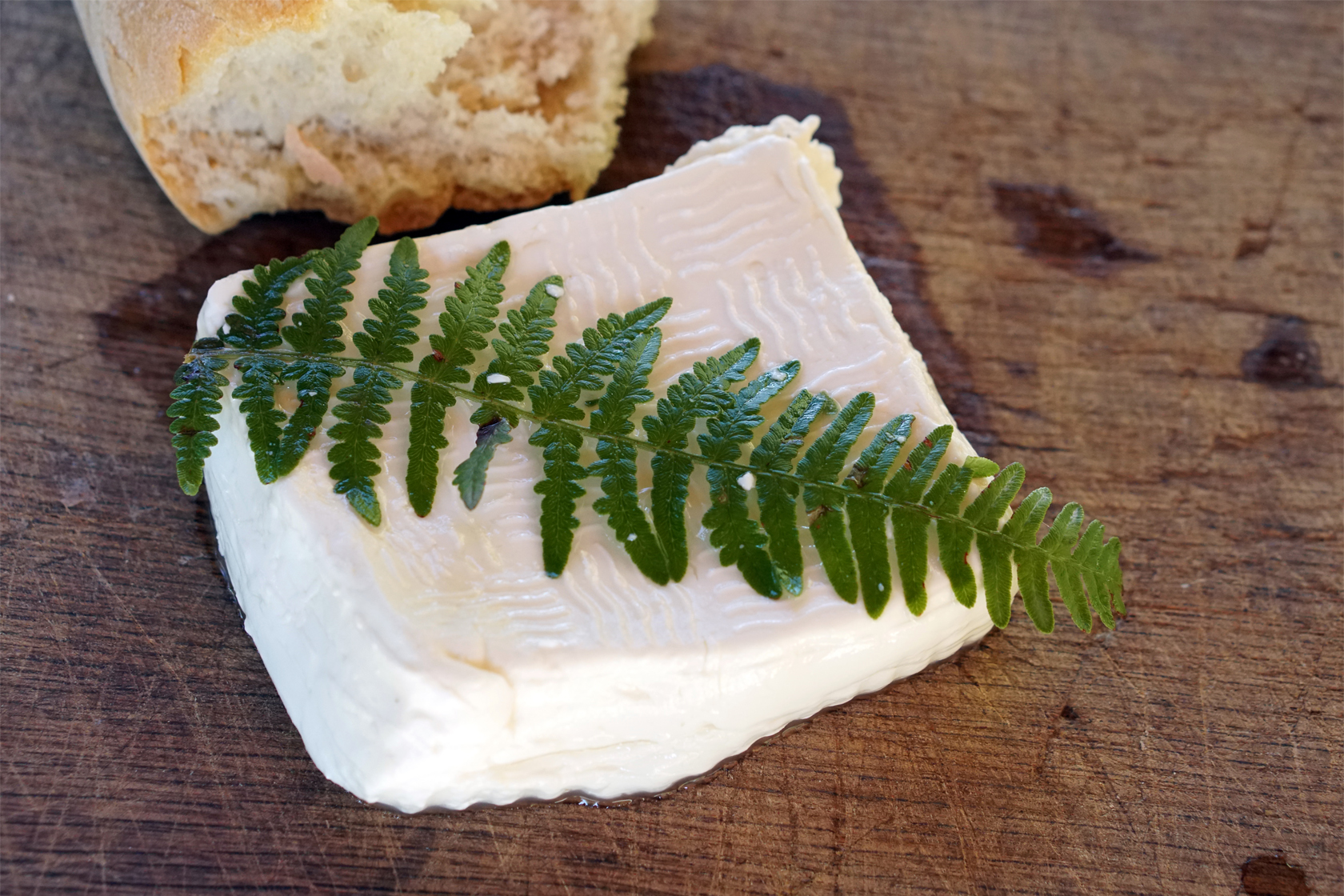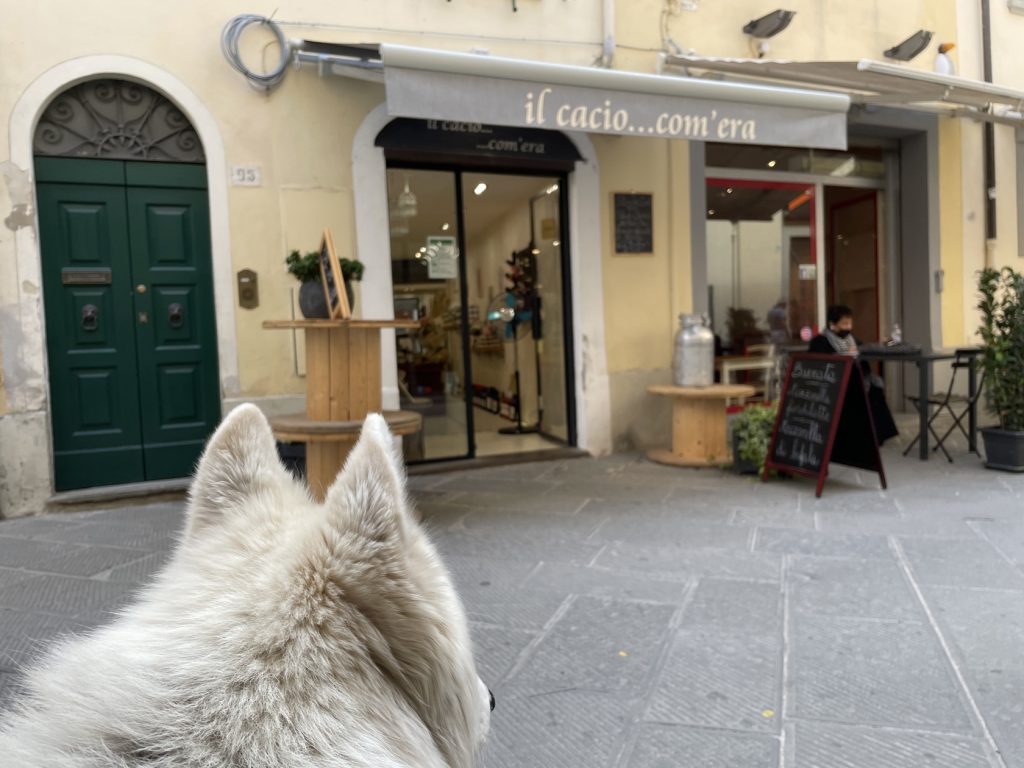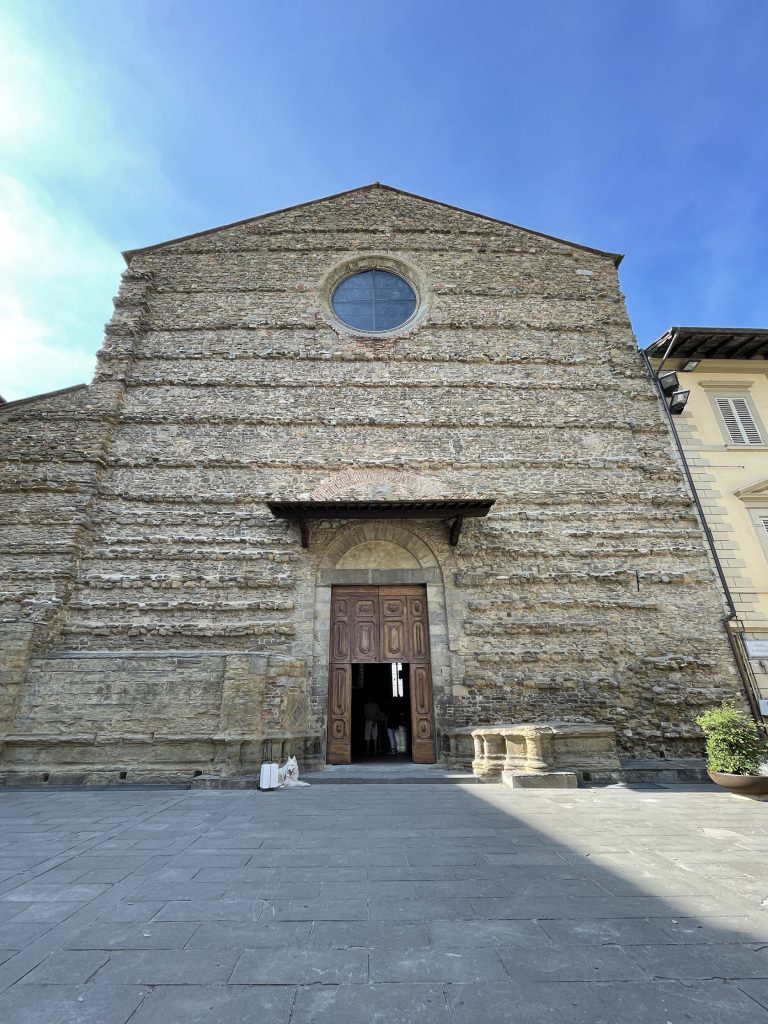Just like any other food, cheese can be seasonal. For example, there are the flavorful “summer cheeses” [either fresh or aged from the prior season] that are made of the milk from when the animals are on higher pastures and eat rich mountain grasses full of flowers and herbs.
Other cheeses are periodically not even available—for instance, some goat’s milk cheeses that are not produced at all during the two months prior to the end of gestation.
And then there are cheeses that are not produced at certain times of the year simply by following a traditional path or method.
A representative of the last category is Italian *Raviggiolo* – our guest today.
On our recent trip to the open days of Caseifici Agricoli we also had a short stop over in Arezzo, where within a few hours we rushed through the village to see as much of the sights as possible and of course went on a hunt for some typical cheese from the area.
Thanks to our new book – *Viaggio con formaggio*, put together by Onaf the Italian Society of Cheese Sommeliers we exactly new what to look for and Gustav didn’t need long to find Eros Scipioni’s cheese shop “il cacio..com’era” that had – besides plenty of different Pecorini – also a *Raviggiolo* on offer.
But before we give you an insight into looks and flavors – here some hard facts.
After all we all know that sweat comes before the joy:
- *Raviggiolo* is a fresh, seasonal cheese that due to its temperature-sensitivity is only produced from October to March and its history dates back to Renaissance times. In fact it was first mentioned in a 1515 document in which the community of Bibbiena (Tuscany) handed a fern-covered *Raviggiolo* over to pope Leon X.
- *Raviggiolo* comes in two “versions”; The Emilia Romagna slow food member from the valleys of the Tuscan–Romagnol Apennines is made of raw cow’s milk from breeds like Romagna, Red Pied, Bruna, Italian Friesian, and cross-breeds of them.
In the tuscan province of Arezzo on the other hand *Raviggiolo* is made of raw sheep`’s milk. - The milk coagulates with the help of liquid calf’s rennet, and the curd—which is neither cut nor stirred—is carefully placed into the molds with the help of a ladle.
- After a short rest *Raviggiolo* is salted, turned, and placed on ferns and should be consumed within 3-4 days of production to ensure aroma and freshness alike.
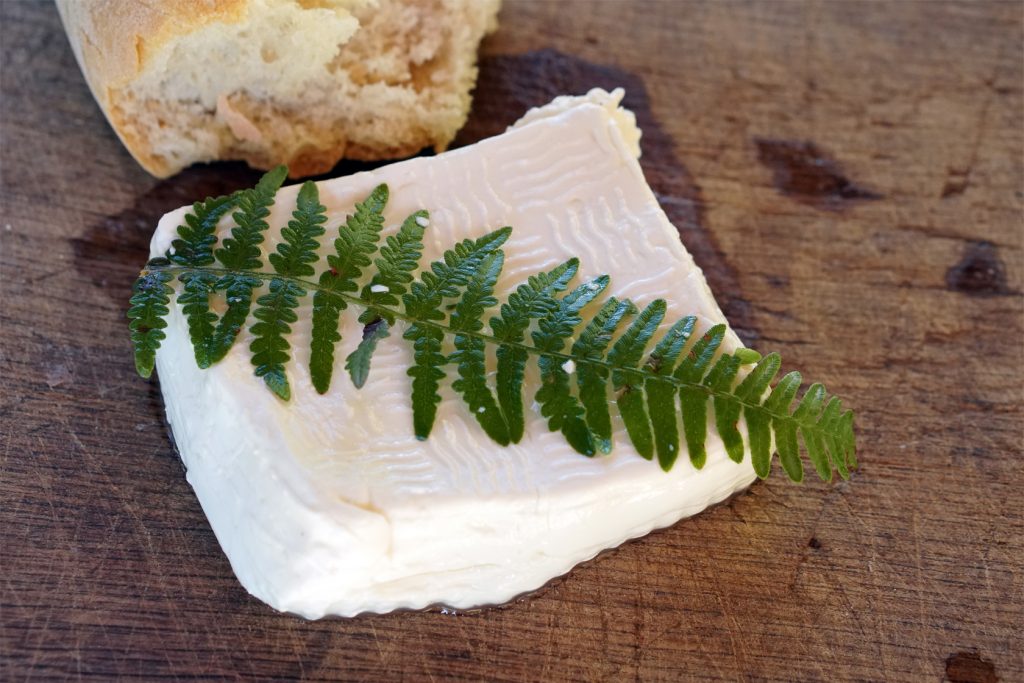 *Raviggiolo* can be cut or scooped and is so versatile you can have him for breakfast, lunch, dinner or just whenever you feel like having a snack.
*Raviggiolo* can be cut or scooped and is so versatile you can have him for breakfast, lunch, dinner or just whenever you feel like having a snack.

*Raviggiolo* is a sweet and acidic aroma cuddler with hints of yogurt and lactic butter. Nutty notes of fresh hazelnuts are carried on a soft body of a wonderfully slurpy, jell-o-shot consistency that transports reminiscences of the weed it is dressed in.
Gustav rates our raw sheep’s milk Raviggiolo by @ilcaciocomera a clear 12/10 for fast gulp features and a nice long memory on the pallet.
He also says that it is a pity you can’t get this wonderful cheese outside of the area since he would just ‘raviggiolo’ up our bath tub and invite all of his friends for a fun slurp and durp!
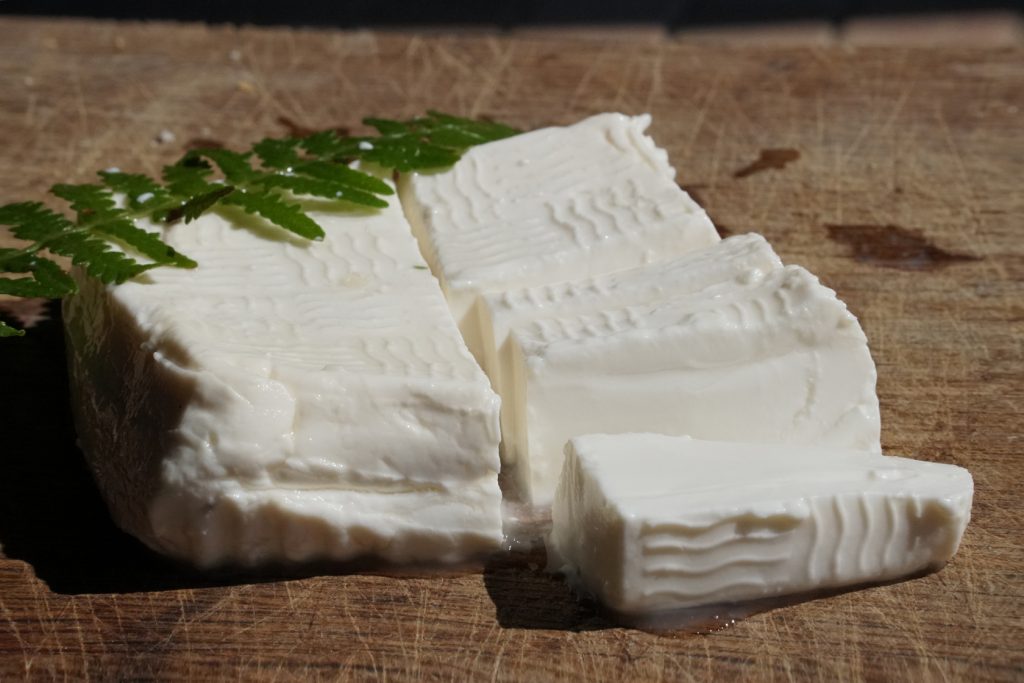
Sources:
Onaf – *Viaggio con formaggio*
Slow Food

